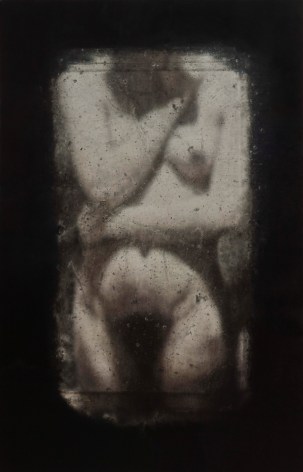For West Bund 2019, Chambers Fine Art is excited to present the work of three generations of Chinese artists – Shang Yang, Song Dong & Yin Xiuzhen, Shi Chong, Zhao Zhao,Yuan Song, and Pixy Liao – who are engaged with different aspects of traditional Chinese culture while finding ways invigorate it through the lens of contemporary society.
Recent works by Shang Yang and Song Dong & Yin Xiuzhen deal with environmental issues. In Shang Yang’s most recent works, landscape and everything it stands for is the essential subject although now in the second decade of the 21st century it is a landscape that has been hollowed out, debased by human greed and pride. His Decayed Book series testifies to the decline of culture and political civility in these troubled times. After graduating from the Fine Arts Department of Capital Normal University of Beijing in 1989, Song Dong and Yin Xiuzhen achieved international fame independently before deciding to work together, confronting social issues through intense gestures and actions that have deep personal meaning. If You See Something, Say Something. If You Don’t See Anything, Don’t Say Anything is a collaborative painting in response to the high levels of smog and pollution in Beijing.
Shi Chong was part of the “new generation” of painters who emerged in the 1980s, gaining wide recognition in China for his photo-realist paintings. As his work developed alongside the avant-garde movement of the 1990s the human body - manipulated and altered - became the principal feature of Shi's painting. Often using live models in laboriously staged environments, Shi executes intricately planned paintings of nudes submerged in water, or partially hidden in shadow.
Today’s young generation of artists touch upon contemporary society in a more playful manner. With Ping Pong, first shown at his breakout exhibition at Chambers Fine Art in 2011, Zhao embraces a subject matter dear to the heart of the Chinese people, a sport in which they excel. The large, colorful paintings of ping pong reduce this fast-moving sport to a generalized, heraldic presentation of the paddles and ball used in the game. The images become instantly iconic. In complete contrast is the work of Pixy Liao, who has spent over a decade documenting her personal relationship with her partner Moro. Her Experimental Relationship series turns traditional gender roles upside down, with Liao in full creative control, and Moro assuming the role of her muse.
The youngest artist of the group is Yuan Song, whose assemblages come from salvaged materials. He collects contemporary, factory-made materials that are reflective or translucent in nature, piecing them together with neon lights in colorful ‘collages’. Yuan Song recognizes the anxiety that comes with the flashy consumerism of contemporary life, and the focus of his work is on the seductive, yet ultimately false, narrative of luxury and beauty in today’s world.
Nature as Measure
In a special section of our booth, Chambers will present a selection of works that build upon our recent exhibition Nature as Measure, which was curated by Candice Madey of Stellar Projects. Artists Mary Simpson, Julia Bland, Song Hongquan, Fu Xiaotong, Guo Hongwei and Yan Shanchun share in their process a layering of natural forms with systems and structures. Although the use of grids, parameters, and processes in making their work references a rational and ordered architecture, these artists challenge the hubris and folly of human design, while also exploring the political and social ideologies embedded in everyday representations of nature.
Mary Simpson’s paintings, watercolors, and drawings have long alluded to mythologies of ancient and contemporary culture, referencing the human and natural forms through poetic abstractions. Similarly, Guo Hongwei adds a metaphorical layer to his work through the choice of poetic and allusive titles. His recent works derive their imagery from natural mineral formations, which he reconfigures into imaginary landscapes, using various mixtures of varnish and oil on canvas.
For Fu Xiaotong, paper is not a surface on which to paint but rather a material to be explored by thousands of pinpricks that result in landscapes or more recently, ambiguous forms that suggest patterns in nature. In contrast, Song Hongquan is inspired by specific objects from nature, although his finely crafted marble sculptures are situated on the cusp between exact replication of seeds or spores and biomorphic abstraction associated with modern sculpture.
Julia Bland’s paintings are created through a wide range of traditional and invented techniques of working with fiber and oil paints. She cuts, dyes, weaves, paints, burns, collages and stitches her works in beautifully complex structures, the color palettes and compositions influenced by unique natural environments and patterns. Yan Shanchun’s work is similarly process-oriented, as he has evolved a hybrid technique in which the image emerges from multiple layers of sanded and scraped plaster powder on which he paints with ink and acrylic, allowing only glimpses of landscape motifs to emerge. The natural surroundings of the West Lake in Hangzhou, one of the most famous and beautiful landscapes in China, is the sole subject of his paintings and prints.















